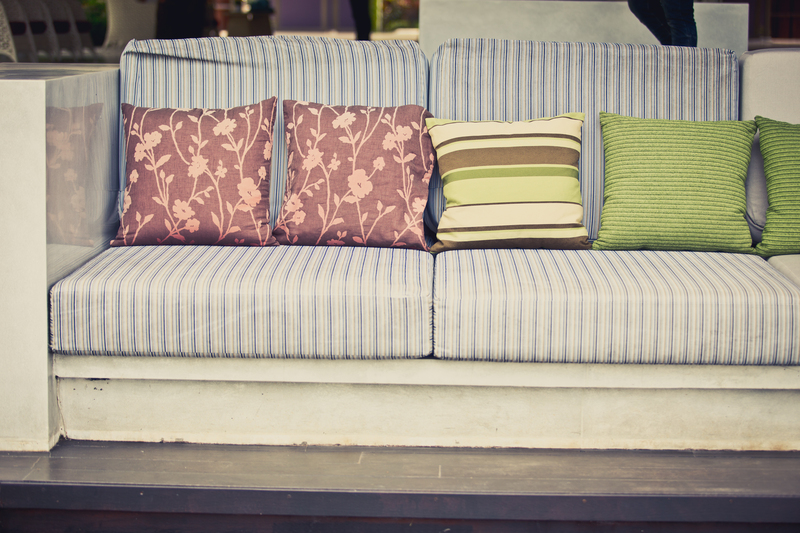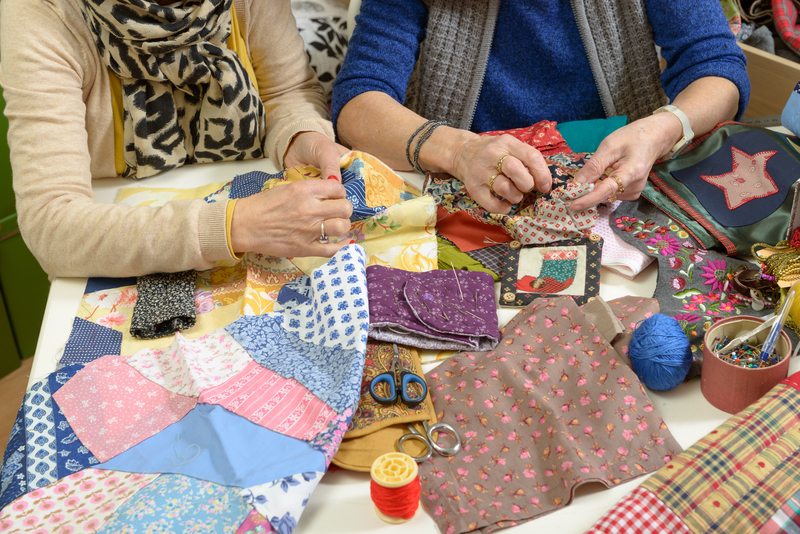Eco-Friendly Plant Pot Disposal Ideas
Are your old plant pots piling up in the shed, greenhouse, or garden corner? As gardeners and environmentally conscious citizens, it's essential to consider sustainable options for disposing of used containers. Standard plastic and ceramic pots can pile up and present unique disposal challenges--however, with a little knowledge and creativity, eco-friendly plant pot disposal is both practical and rewarding. Here, you'll discover comprehensive, Google-friendly tips and ideas to get you started.

Why Responsible Plant Pot Disposal Matters
Every year, millions of plant pots are discarded, creating a significant environmental concern. Plastic plant pots, in particular, can take hundreds of years to break down in landfills. Some pots are made of materials that leach harmful chemicals as they decompose, posing risks to soil and water life. Even biodegradable containers may not decompose as intended if not processed correctly. Therefore, responsible and eco-friendly plant pot disposal is critical for reducing environmental impact.
- Prevents landfill accumulation and plastic pollution
- Reduces carbon footprint by promoting reuse and recycling
- Encourages sustainable gardening practices
- Protects wildlife and soil from toxins
Best Materials for Eco-Friendly Pot Disposal
Before diving into disposal techniques, it's vital to identify your pot's material. Here are some common types--and how eco-friendly they may be:
- Plastic: Widely used and lightweight, but not all plastic pots are recyclable. Look for recycling codes (usually 2, 5, or 6) on the bottom of pots.
- Terracotta: Made from natural clay, these pots are porous and break down slowly. They're reusable and sometimes recyclable at masonry yards.
- Ceramic: Durable and decorative but not always suitable for curbside recycling.
- Biodegradable: Includes pots made from peat, coir, or compressed manure intended to decompose in the soil.
- Metal and Wood: Both can be reused, but certain finishes or treatments may limit eco-friendliness.
Top Eco-Friendly Plant Pot Disposal Ideas
1. Reuse Whenever Possible
Perhaps the most sustainable plant pot disposal method is giving pots a new life. There are creative and practical ways to reuse plant containers:
- Start Seeds: Use small pots for propagation or starting seedlings each season.
- Organize Tools: Store garden tools, labels, or composting worms in cleaned, repurposed pots.
- Decorative Projects: Paint and decorate old pots to create unique garden art, indoor organizers, or upcycled vases.
- Gift Giving: Fill pots with herbs, flowers, or small gifts for eco-friendly presents.
- Craft Activities: Engage kids or community groups in decorating and reusing pots for crafts or school projects.
*Pro tip:* If your pots are cracked or broken, larger pieces can provide drainage at the bottom of other pots, or be used in mosaics.
2. Community Pot Swaps & Garden Centers
Many local garden centers and plant nurseries organize pot recycling and swap programs. This is a win-win solution: gardeners offload extra containers, while others gain free or low-cost pots for their next planting project.
- Ask Your Local Nursery: Many retailers partner with recycling companies or facilitate swaps. Some chain stores (like Lowe's or Home Depot in the US) have dedicated collection bins for used pots.
- Community Events: Watch for seasonal plant exchanges or local environmental group initiatives focused on garden pot recycling.
- Online Networks: Post available pots on neighborhood forums, social media, or platforms like Freecycle and Craigslist.
3. Recycle Responsibly
Not all pots can be recycled via curbside bins, especially black plastic, which is often unrecognized by sorting machines. Here's how to ensure your garden pot recycling efforts make an impact:
- Clean Thoroughly: Remove soil and labels. Before recycling, pots should be free of all residues.
- Check Local Facilities: Contact your local recycling center to ask which types of plastics and ceramics they accept.
- Non-Recyclable Options: Black plastics, some ceramics, or heavily glazed pots may belong in construction recycling or specialized facilities.
- Drop-Off Locations: Search for garden centers or municipal programs that specifically handle horticultural plastics and ceramics.
Remember: Just because a pot is plastic does not mean it's recyclable curbside. When in doubt, ask a professional recycler.
4. Compostable & Biodegradable Pots
Compostable pots, often made from peat, coconut coir, rice husks, or paper fibers, break down naturally in the right conditions. Here's how to make the most of these eco-friendly biodegradable plant pots:
- Plant Pots in Place: Biodegradable pots can be placed directly into soil, where roots will grow through and the material will decompose.
- Compost Bin: If not planting-in-place, remove stickers or synthetic coatings before adding to your home compost pile.
- Avoid Inappropriate Materials: Some pots labeled "biodegradable" contain synthetic binders or plastics and will not break down as intended.
- Speed Decomposition: Break larger pots into smaller pieces, and ensure moisture and air in your compost bin to encourage breakdown.
5. Innovative Upcycling Projects
Get creative and upcycle your pots into useful or decorative objects. Here are several eco-friendly plant pot repurposing ideas:
-
Bird Feeders: Hang small pots, paint them, and fill with seeds.
Lighting: Ceramic pots can become quirky pendant lamps for patios or porches. - Garden Edge: Bury old terracotta pot rims partially to form a rustic border along pathways or flower beds.
- Fairy Gardens: Use disused pots to create whimsical miniature landscapes for children or guests.
- Storage: Stack smaller plastic pots for tool storage in sheds, or use large ones as organizers in garages.
Upcycling plant pots not only reduces waste, it also adds unique character to your indoor and outdoor spaces.
6. Craft as Building Materials
Broken ceramic or terracotta pots are valuable for crafty gardeners!
- Drainage: Pot shards at the bottom of new containers improve drainage.
- Mosaic Art: Decorate planters, stepping stones, or even small walls with pieces of cracked pots.
- Mulch: Crushed terracotta can serve as long-lasting mulch in garden beds.
7. Donate to Schools, Artists, or Garden Groups
Some organizations have ongoing needs for inexpensive or free plant pots. Donate extras to:
- Schools and Community Gardens: Used in science projects, art classes, or for growing food.
- Artists: Creative individuals can use pots for sculpture or installations.
- Local Garden Clubs: For plant sales, seedling propagation, or teaching workshops.
How to Clean and Prepare Pots for Reuse or Disposal
Proper cleaning extends the life of pots and protects new plants from pests and soilborne diseases. Follow these steps:
- Remove all soil, roots, and debris.
- Scrub with a stiff brush and rinse with clean water.
- Soak in a solution of 1 part bleach to 9 parts water for 10 minutes (for non-porous pots) to kill lingering pathogens.
- Let dry completely before storing or distributing.

The Future: Choosing Sustainable Plant Pots
The shift toward sustainable plant pots is growing! When purchasing new containers, opt for products made from:
- Recycled plastic or marine plastics
- Bamboo, rice hull, or coconut coir composites
- Fiber pots (paper or cardboard)
- Wood or untreated terracotta from ethical sources
Supporting companies and nurseries that prioritize sustainable packaging is a great way to close the eco loop in your gardening practice.
Summary: Make Eco-Friendly Plant Pot Disposal a Habit
Implementing eco-friendly plant pot disposal ideas not only clears out clutter but significantly benefits the environment. Whether you choose to reuse, recycle, compost, upcycle, or donate, every container kept out of the landfill counts.
- Assess pot material and choose the best disposal method
- Prioritize reuse and community sharing
- Clean pots for safe reuse or recycling
- Experiment with upcycling and creative projects
- Donate extras to benefit your community
With a bit of effort and imagination, gardeners everywhere can transform the way we think about plant pot disposal. Make these eco-friendly disposal tips part of your routine, and help grow a greener, cleaner world--one pot at a time.